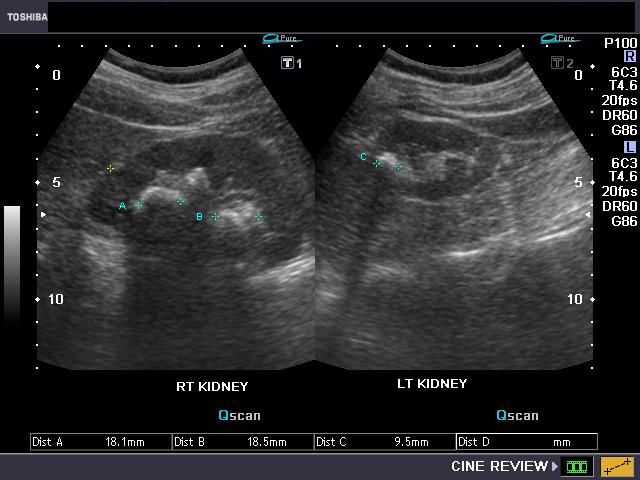

As oral antibiotics were not responsive, she was admitted in this hospital for further treatment. One week before admission, this patient’s urinary irritation relapsed with high fever. Symptoms usually were relieved within a week with antibiotics therapy, but the infections relapsed easily. Since then, she suffered from urinary tract infection every 3–4 months, and urine cultures were negative. ADPKD was diagnosed considering her family history.
#Staghorn calculus full
After admission, bilateral enlarged kidneys full of fluid-filled cysts were detected by type-B ultrasound examination, and there were no calculus or crystals in the kidneys detected at that time. Three years ago, the patient was admitted in community hospital for urinary tract irritation with right flank pain and fever for 2 days, and right upper urinary tract infection was considered. As staghorn calculi are associated with kidney fibrosis and high long-term renal deterioration rate, prompt control of urinary tract infection in polycystic kidney disease patient will be beneficial in preventing staghorn calculus formation.Ī 37-year-old ADPKD female patient with positive family history was admitted in this hospital for repeatedly urinary tract infection for 3 years. UTI is an important complication for polycystic kidney disease and will facilitate the formation of staghorn calculi. CT scan revealed the existence of a complete staghorn calculus in her right kidney, while there was no kidney stone 3 years before, and the urinary stone component analysis showed the composition of calculus was magnesium ammonium phosphate. This 37-year-old autosomal dominant polycystic kidney disease female with positive family history was admitted in this hospital for repeatedly upper urinary tract infection for 3 years. We report a case of complete staghorm calculus in a polycystic kidney disease patient induced by repeatedly urinary tract infections. For general population, recent data showed metabolic factors were the dominant causes for staghorn calculus, but for polycystic kidney disease patients, the cause for staghorn calculus remained elusive. However, complete staghorn calculus is rare in polycystic kidney disease and predicts a gloomy prognosis of kidney. Kidney stones in patients with autosomal dominant polycystic kidney disease are common, regarded as the consequence of the combination of anatomic abnormality and metabolic risk factors.


 0 kommentar(er)
0 kommentar(er)
